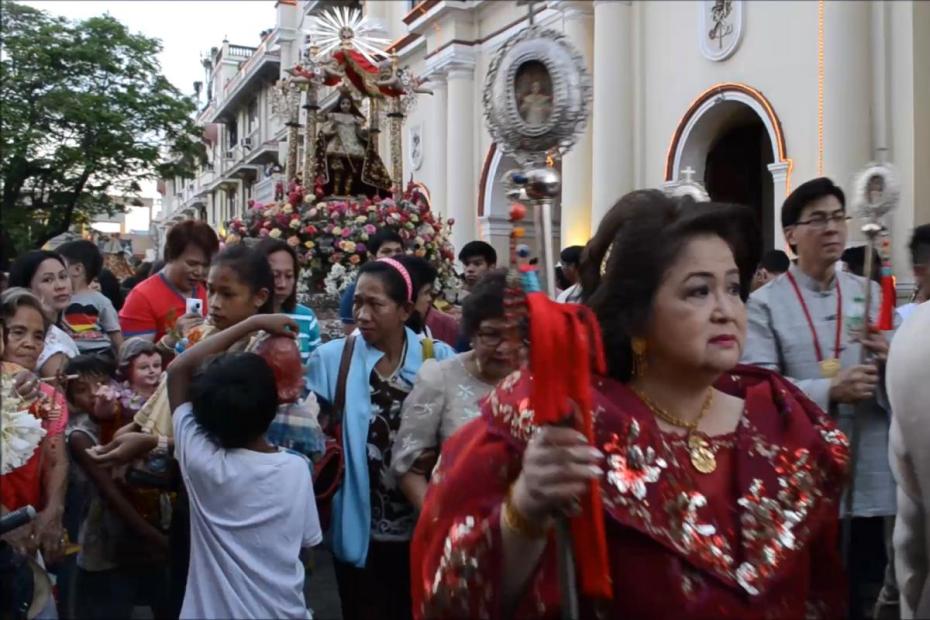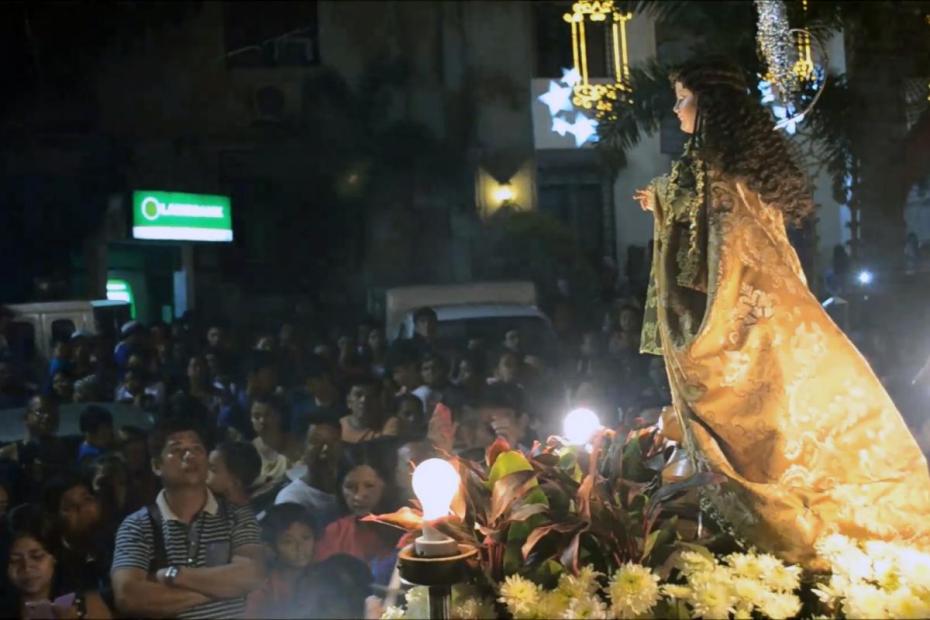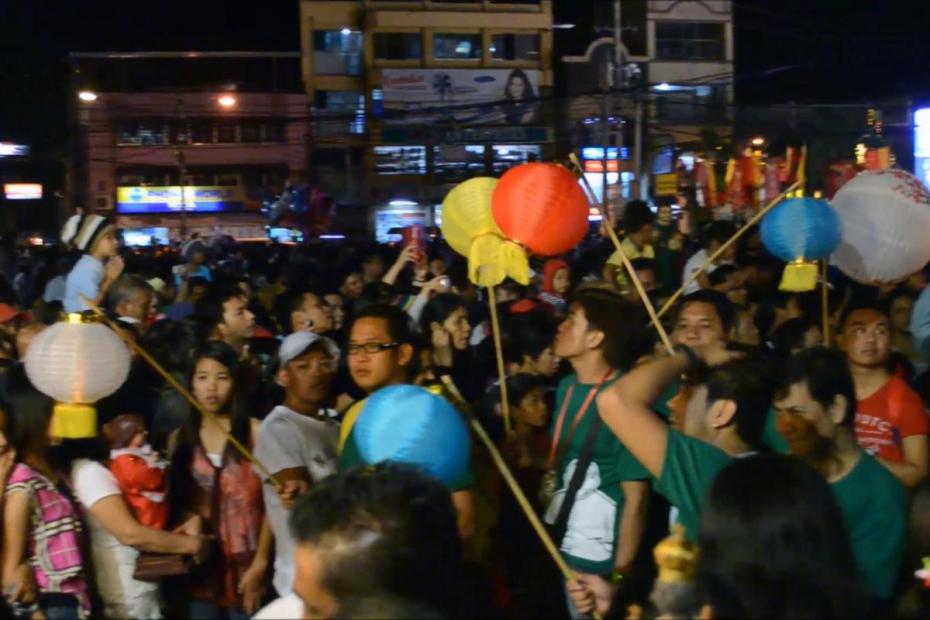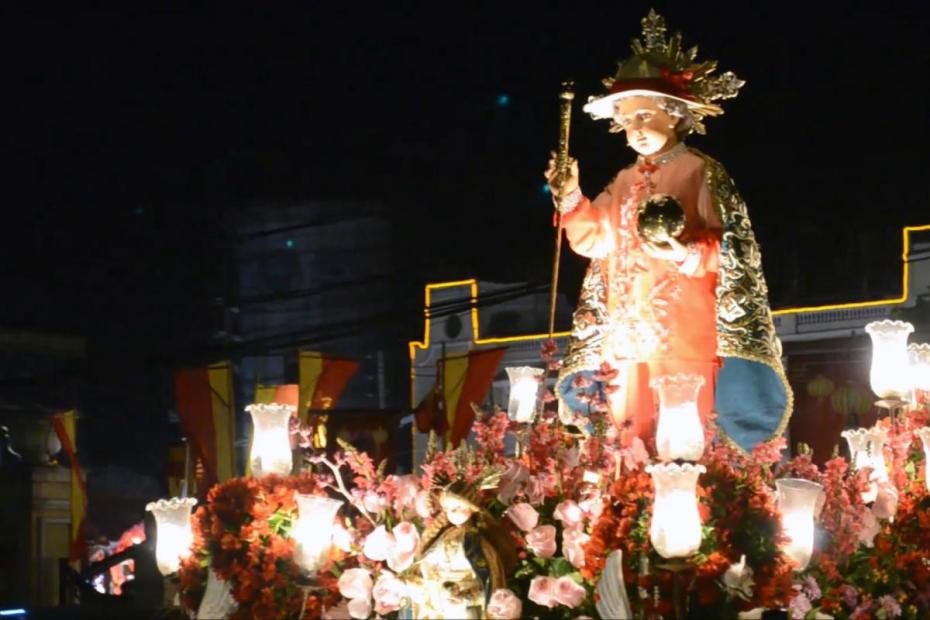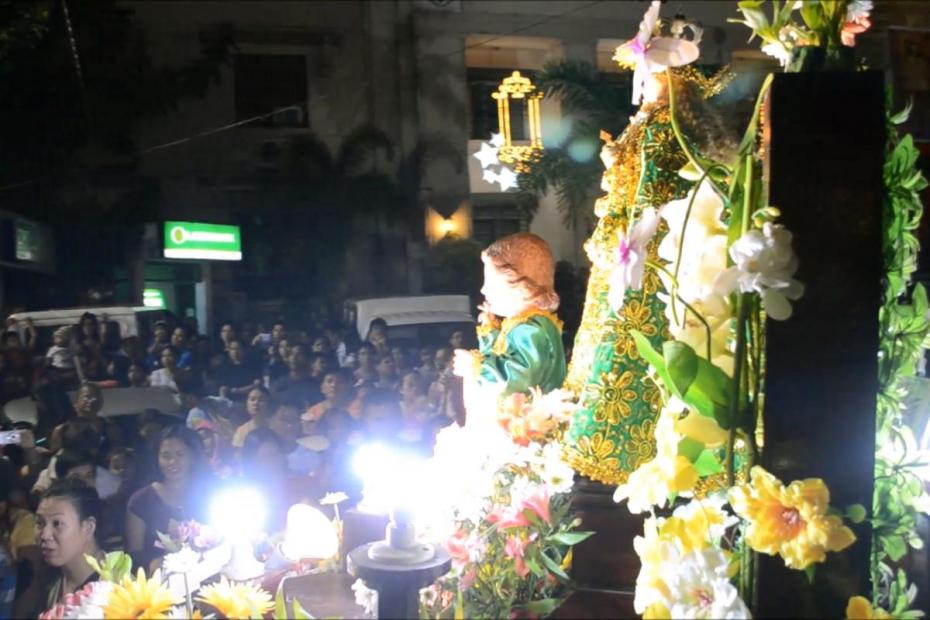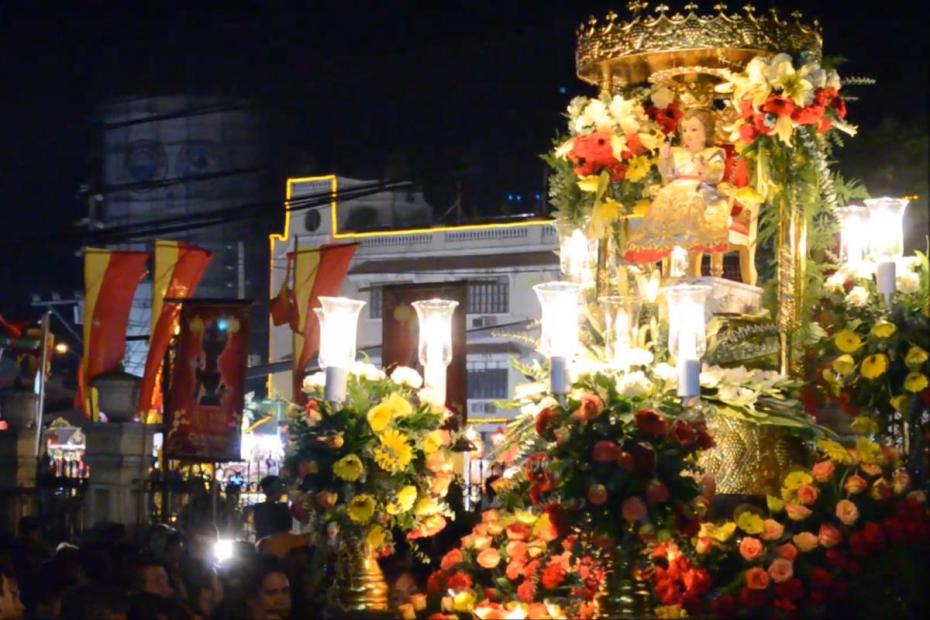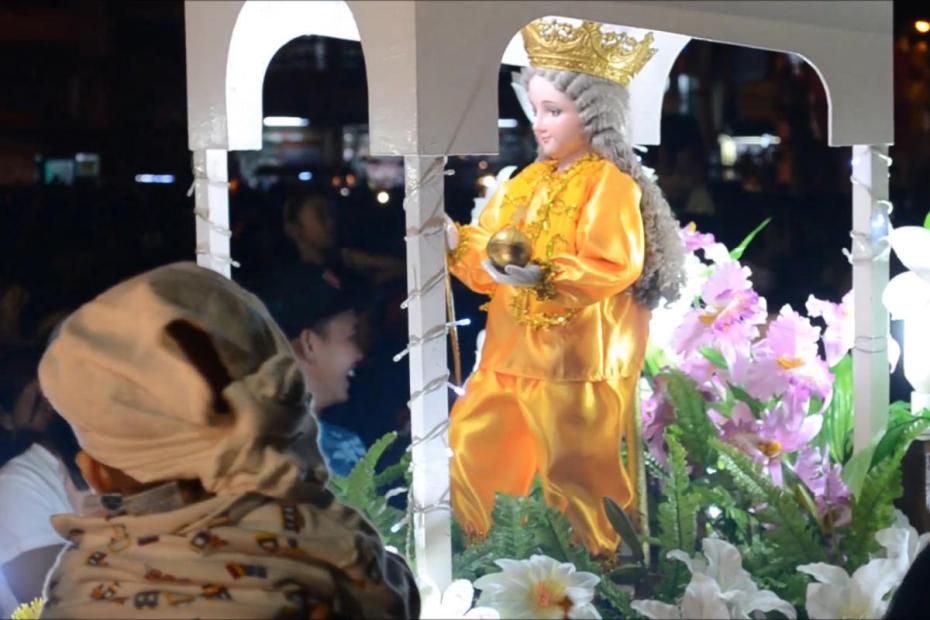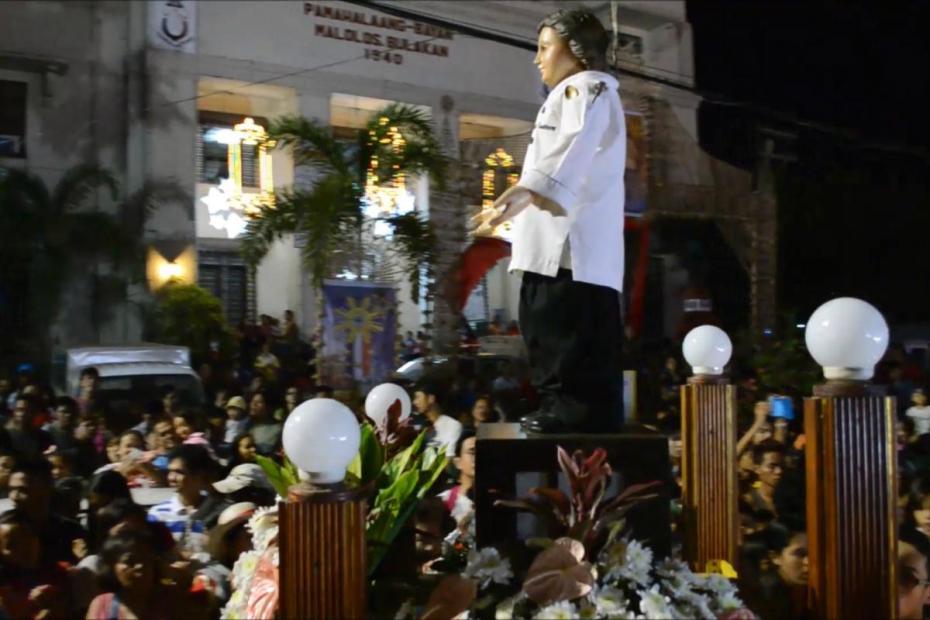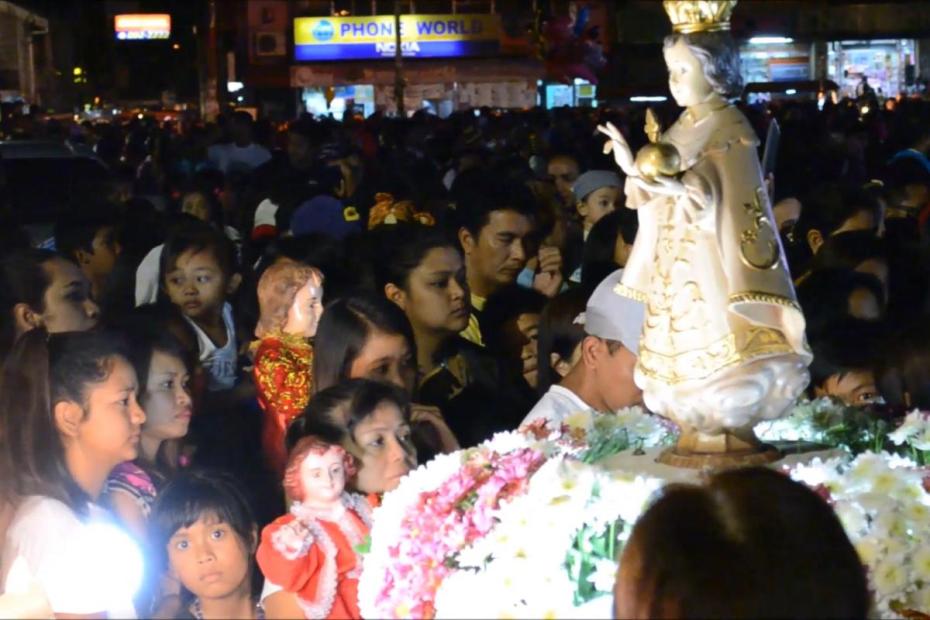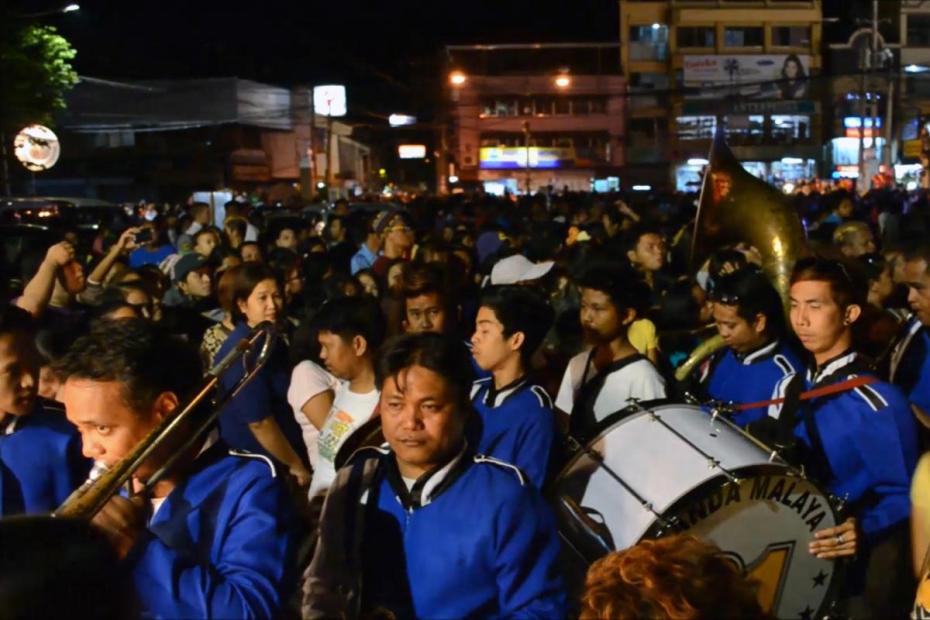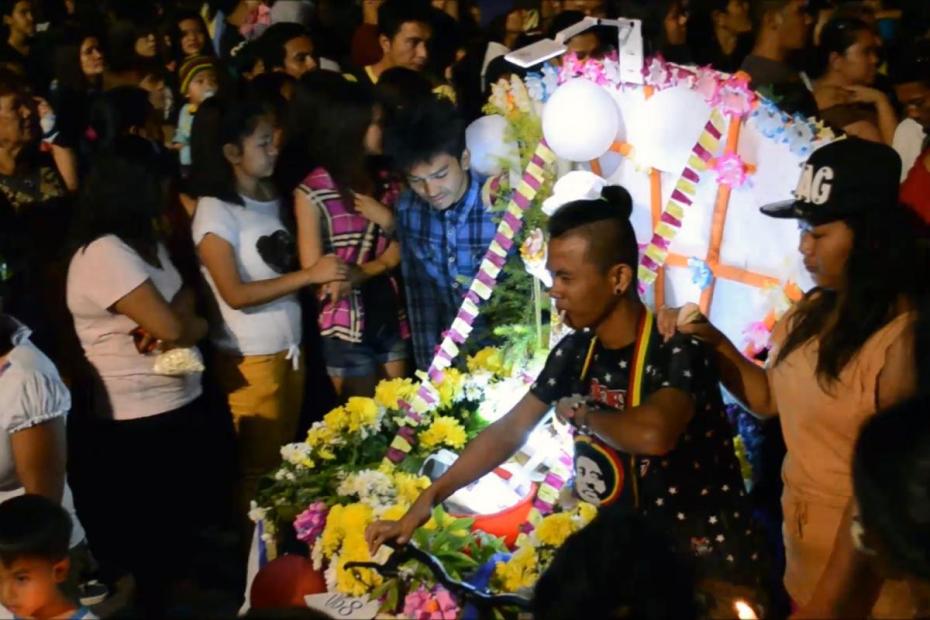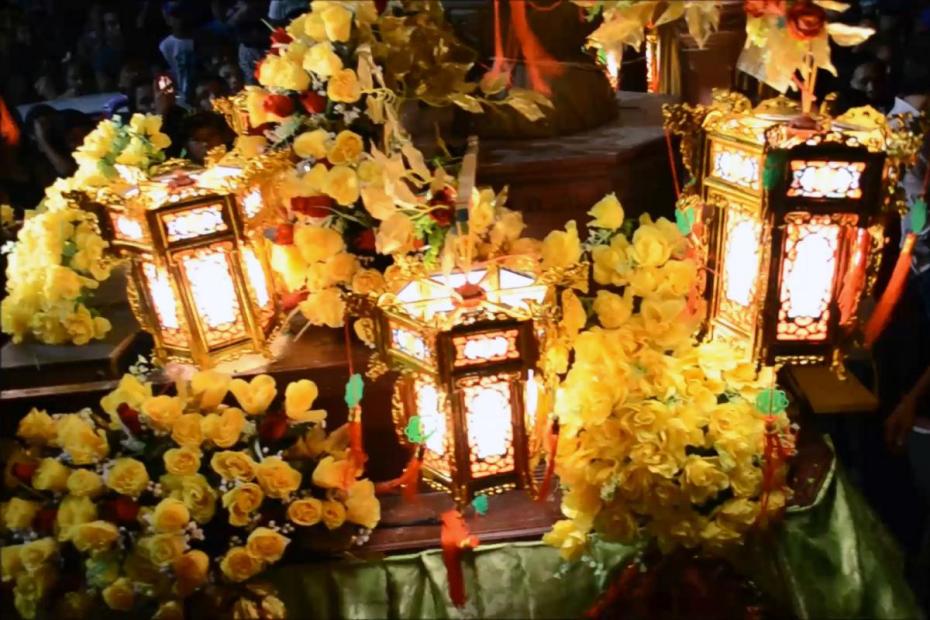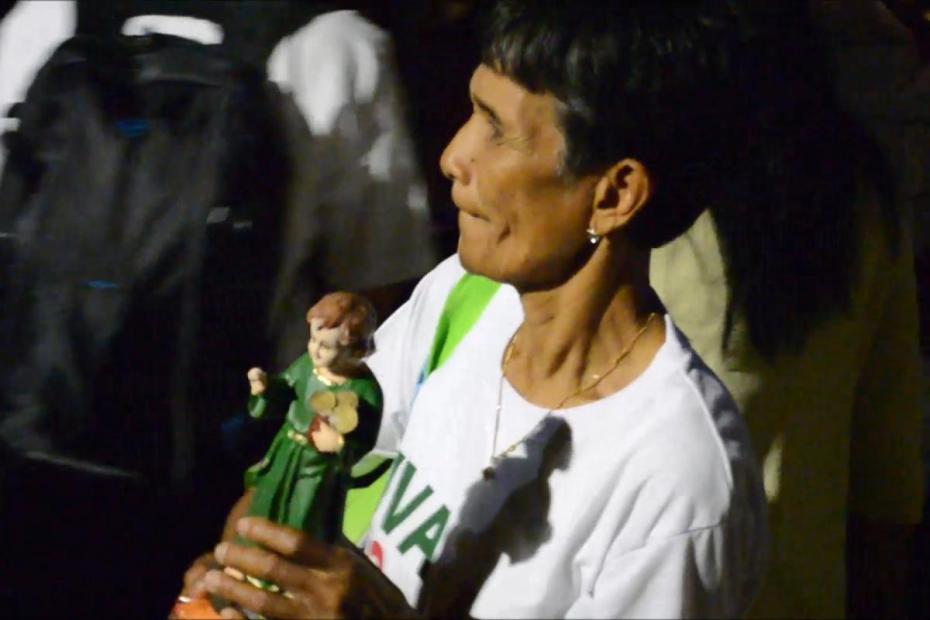In Malolos City, Bulacan, 40 km north of Manila, crowds gather at the end of January each year for a grand feast to celebrate the Santo Niño, the Holy Child, one of the most widely revered holy figures in the Philippines. Malolos is home to a revered image, the Santo Niño of Malolos, but the feast here is also notable because more than 200 other images of the Santo Niño, some traditional and some quite imaginative, are processed along with it. Like the participants, these images come from all over the country, occasionally even from abroad. The celebration, while much smaller than the annual one in Cebu, provides a way of seeing in a single place how many local manifestations of the Santo Niño have made their way into Filipino life and culture. The Malolos feast is the largest celebration of Santo Niño on Luzon Island.
The Santo Niño of Malolos is an antique ivory image, locally regarded as miraculous, that belongs to a prominent Filipino-Chinese family, the Tantocos. He is regarded as the patron of the barangay1 originally known as Kamistisuhan, since renamed for Santo Niño. Celebration of the feast of Santo Niño was in decline in Malolos from World War II until 1966, when townspeople led by Dr. Luis Santos revived it with great success and organized the feast in the the format used today. A foundation was established to encourage and propagate devotion to the Santo Niño of Malolos, and began a tradition of displaying a large number of Santo Niño images and processing them behind the Santo Niño of Malolos on the feast day. Each year a hermano mayor, a head brother, is selected from among the foundation members to lead the events during the feast, and serves a the main benefactor of the fiesta.
The feast is on the last Sunday in January, but as is often true in the Philippines, celebrations begin many days before the actual feast day.2 The days of celebration begin with a traditional panaog, a procession in which the statue of Santo Niño de Malolos is brought from the Tantoco family house to a chapel dedicated to him. (Though the Santo Niño of Malolos is believed to have very special qualities, the tradition of families owning the images used in processions is not unusual at all. The images are often handed down in families in the Philippines, displayed and cared for in the family home until the time they are brought out for appropriate feasts). The panoag is accompanied by devotees, brass bands playing traditional songs, and dancers. The Santo Niño de Malolos statue remains on display in the chapel for a nine-day Novena until the Vispera Mayores, the day before the feast day.
In the days leading up to the feast, an exhibit of the Santo Niño images to be featured in Sunday’s procession are displayed at the diocesan museum at the Barosoain Shrine complex.3 On the day of the Vispera Mayores, the images, each on a lavishly decorated caroza, or processional carriage, are processed to the Basilica Cathedral of the Immaculate Conception, in a procession known as a translacion.
In 2015, on the Sunday of the actual feast, the festivities began in the morning with a High Mass celebration, officiated by the local bishop. Activities during the day included a procession of the image of Santo Niño for children. A final High Mass at 5 p.m. was followed by a grand procession through the streets, the highlight of the celebration, with Santo Niño de Malolos at the front, followed by 230 images of Santo Niño, each on a lavishly decorated caroza adorned with flowers, lights, candles and even Chinese lanterns (the foundation had chosen to add Chinese motifs to the procession that year). Each caroza passed by a stage where a commentator introduced it and, when appropriate, gave some information about the background of the image.
The procession mostly included images of the Santo Niño that built on traditional Catholic devotions, concepts, and geographic identities, both European and Filipino. Still, they constituted a huge panoply. They included Santo Niño de Cebu, Santo Niño de Pandacan, Santo Niño de Tondo, Santo Niño of Good Health, Infant Jesus of Prague, Santo Niño sleeping, and Santo Niño Morenito (literally, “little brown one,”) a dark skinned image of Santo Niño. Other manifestations reflected professions, such as Santo Niño “peacemaker” (as a policeman), Santo Niño Panadero (baker), Santo Niño Golfer, Santo Niño Cantero (stone mason), Santo Niño Medico (doctor), and Santo Niño Labrador (worker). Though many processions in the Philippines contain large numbers of saints, a procession with so many images of Santo Niño made the feast unusual, even as it drew attention to a manifestation of piety very deeply ingrained in Filipino culture.
As the procession proceeded outside the church patio, fireworks were launched and brass bands started playing traditional festive songs. Groups of devotees were part of the procession for each image; while thousands of others just stayed on their places and watched the procession, often holding their own images of Santo Niño. From the cathedral, the procession passed through the streets of several sections of the city — Parianchillo, San Vicente, Barosoain, Casa Real — before returning to the cathedral for a final blessing of the images.
- 1A barangay is the smallest unit of local government in the Philippines.
- 2Observations here are based on participation by the author in the 2015 Santo Niño de Malolos festival.
- 3The Barasoain church is famous in the Philippines as the site where the first constitution for an independent Philippines was drawn up.
